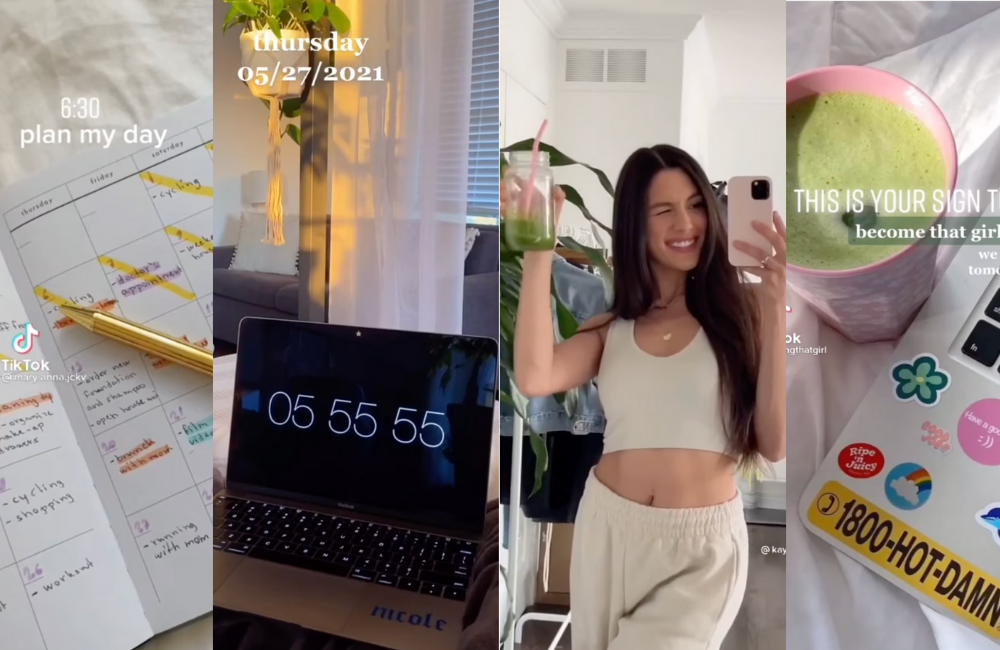She drinks ceremonial grade matcha. She owns 40 different matching workout sets. She wakes up at 5:00 a.m. to journal. She eats avocado toast in her well-lit apartment. She is “that girl.”
In the new wave of self-improvement content, “that girl” exists alongside other social media characters like gym rats and Gary Vee enthusiasts. But while some internet trends leave kids eating Tide Pods or wanting to get lip filler to look like a Kardashian, “that girl” encourages viewers to partake in a healthy lifestyle. Compared to the days of eating disorder and self-harm glamorization on platforms like Tumblr, “that girl” seems like it might be a step in the right direction.
“That girl” videos feature young women going about strict daily routines that often begin very early in the morning. They’re full of colorful expositions of smoothie bowls, matching minimalist outfits, and the same handful of self-improvement books. The videos encourage lots of alone time and the benefits of working on oneself.
I fell into the “that girl” trap during the Covid-19 lockdowns when my university classes were online and any sense of structure in my life was erased. The “that girl” TikToks and associated how-to guides made by popular lifestyle Youtubers granted me a sense of peace. “That girl” offered a reclamation of balance in an off-kilter world.
Many of the practices have proved to be very beneficial in my life. I take my sleeping schedule more seriously, I’m more conscious of my personal boundaries, and I read more. That lifestyle was easy for me to keep up with until the lockdowns released and the demands of daily life caught up.
Yet, as helpful and inspiring as social media health trends can be, the pendulum can swing far the other way. The rigid structure this trend promotes can make it easy to slip up and then feel as though you are no longer “that girl.” She exists in the vacuum of the internet. Her mentality is about making sure every second of life is milked for its worth. This leaves little room for being human or existing to serve anyone but oneself.
People have also poked fun at the trend for romanticizing very normal parts of many people’s lives. Most people don’t wake up at six in the morning for fun. They have 60-hour workweeks and can’t afford to buy fancy coffee drinks or avocado toast.
This image-based concept of success is flawed. Successful people still have bad hair days, get crabby sometimes, and eat cheap microwave food when some evenings they have low energy. Pushing this image of what the singular image of a healthy young woman is supposed to look like hinders young audiences from seeing human nature as to how versatile it really is. Things like spontaneity and conflict resolution do not exist in the “that girl” universe.
There is more to life than what the internet suggests. Hopefully, the pendulum has swung far enough to the healthy side of content and at some point, we will strike a balance.
The wave of wellness content targeting both men and women is not inherently bad, but we need to be consciously aware of the true depth (or lack thereof) of what these trends promote. Although it is valuable to focus on oneself for periods of time, it is crucial to be an active participant in life: to work with others, maintain relationships, and exist outside of the spheres of our egos.
When she’s ready to leave, she can come out to real life where we wear jeans, drink Redbull sometimes, and watch our avocados go rotten within the hour.









